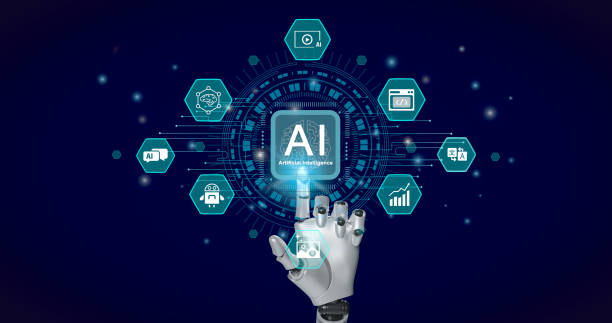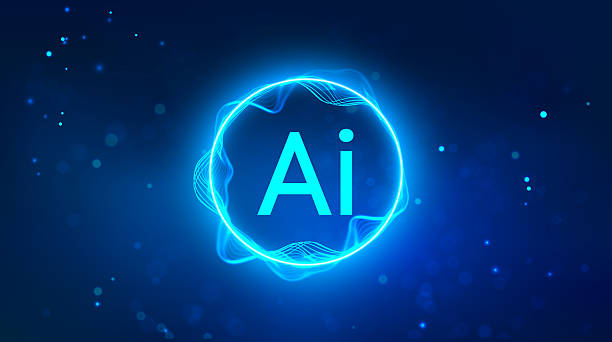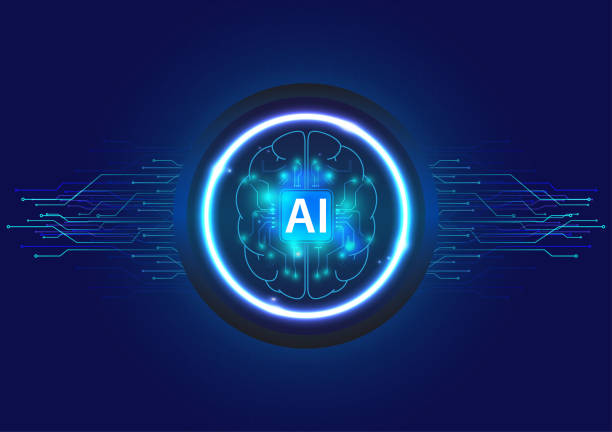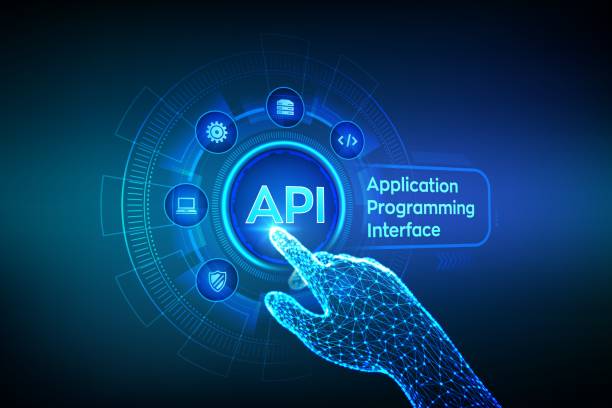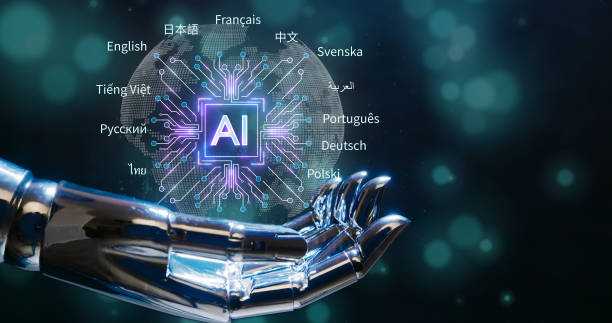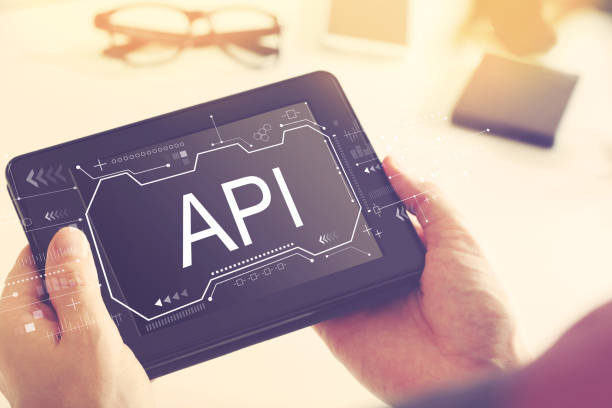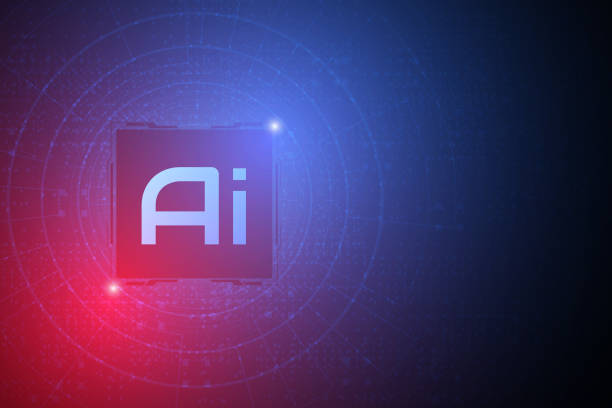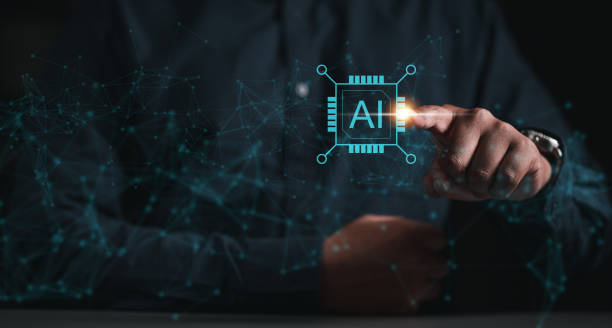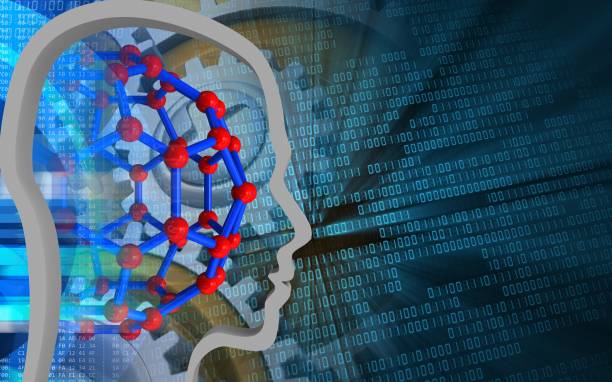### What is an Artificial Intelligence Robot: Definition and Applications
In today’s world, the term #artificial intelligence robot is increasingly heard.
But what exactly is an artificial intelligence robot? Simply put, an artificial intelligence robot (AI Robot) is an intelligent agent that has the ability to perform tasks that usually require human intelligence.
These tasks include learning, reasoning, problem-solving, understanding natural language, and even creativity.
An AI robot analyzes data using complex algorithms and models, and makes decisions based on it.
These decisions can range from facial recognition in an image to predicting stock market trends.
AI robots have extensive applications in various industries.
In the manufacturing industry, they are used to automate processes and increase productivity.
In medicine, AI robots can help diagnose diseases and provide personalized treatments.
In customer service, AI robots in the form of chatbots answer customer questions and solve their problems.
Overall, an AI robot is a powerful tool that can improve our lives in many aspects.
However, a thorough understanding of what it is and its applications is essential for the optimal and responsible use of this technology.
Therefore, in the rest of this article, we will examine more details about AI robots and their impact.
Research shows that 80% of customers trust companies with professional websites more. Does your current website inspire that trust?
With Rasaweb’s corporate website design services, solve the problem of customer distrust and a weak online image forever!
✅ Create a professional image and increase customer trust
✅ Attract more sales leads and grow your business
⚡ Get a free consultation
Main Components of an Artificial Intelligence Robot
An AI robot consists of several main components, each of which plays an important role in its overall performance.
These components include:
Click here to preview your posts with PRO themes ››
Sensors Sensors are tools that collect information from the surrounding environment.
This information can include images, sounds, temperature, pressure, and other sensory data.
Sensors allow the AI robot to be aware of its environment and react accordingly.
Processors Processors are the brain of the AI robot.
They process the information collected by the sensors and make decisions based on algorithms and AI models.
Processors can be hardware (such as CPU or GPU) or software.
Algorithms and AI Models Algorithms and AI models are a set of instructions and mathematical formulas that allow the AI robot to learn, reason, and decide.
These algorithms can include neural networks, support vector machines, and decision trees.
Actuators Actuators are tools through which the AI robot interacts with the surrounding environment.
These actuators can include motors, arms, displays, and other devices.
Actuators allow the AI robot to perform physical actions and make changes to the environment.
Software Software is the interface between hardware components and AI algorithms.
This software is responsible for tasks such as controlling sensors, processing data, executing algorithms, and controlling actuators.
The software can be written in various programming languages such as Python, Java, and C++.
These components, working together, enable an AI robot to perform various tasks.
Understanding these components is essential for the development and optimal use of AI robots.
Types of Artificial Intelligence Robots Based on Application
AI robots are divided into different categories based on their applications.
Understanding these categories helps us to better understand the diverse applications of this technology.
Some of the most important types of AI robots include:
Industrial Robots These robots are used in factories and production lines to perform repetitive, dangerous, and precise tasks.
They can assemble parts, paint, weld, and move materials.
Industrial robots typically have mechanical arms and advanced sensors that allow them to work with high precision.
Click here to preview your posts with PRO themes ››
Service Robots These robots are designed to provide services to humans.
They can assist nurses in hospitals, serve guests in hotels, serve food in restaurants, and guide customers in stores.
Service robots typically have the ability to interact with humans and move in complex environments.
Medical Robots These robots are used in hospitals and medical centers to perform complex surgeries, assist in patient rehabilitation, and deliver medication.
Medical robots typically have high precision and control and can help surgeons perform minimally invasive surgeries.
Military Robots These robots are used on battlefields and military operations to perform reconnaissance, bomb disposal, and transport equipment.
Military robots are typically highly resistant to harsh conditions and can operate in dangerous environments.
Space Robots These robots are used in space missions to perform exploration, equipment maintenance and repair, and sample collection tasks.
Space robots typically have the ability to withstand harsh space conditions and perform complex tasks remotely.
This table shows an example of the differences in the application of artificial intelligence robots:
| Type of AI Robot | Application | Features |
|---|---|---|
| Industrial Robot | Production line automation | High precision, repeatability, speed |
| Service Robot | Providing services to humans | Interaction with humans, movement in complex environments |
| Medical Robot | Surgery, rehabilitation, drug delivery | High precision and control, minimally invasive |
| Military Robot | Reconnaissance, bomb disposal | High resistance, work in dangerous environments |
| Space Robot | Exploration, repair, sample collection | Withstand harsh space conditions, remote control |
In addition to these classifications, AI robots can also be classified based on the type of artificial intelligence used.
For example, robots that use neural networks are known as deep learning robots.
Challenges in Developing Artificial Intelligence Robots
The development of AI robots faces numerous challenges that require innovative and advanced solutions.
Some of these challenges include:
High Cost Developing and building AI robots requires significant investment.
Advanced hardware components, complex software, and the expertise of skilled manpower all entail high costs.
This high cost can be a barrier for small and medium-sized companies to enter this field.
Technical Complexity AI robots are complex systems consisting of a combination of hardware, software, and AI algorithms.
Developing these systems requires expertise in various fields such as robotics, artificial intelligence, electronics, and computer science.
Ethical Issues The use of AI robots raises important ethical issues.
These issues include privacy, discrimination, accountability, and safety.
For example, if an AI robot makes a wrong decision and causes harm, who will be responsible?
Cybersecurity AI robots can be targeted by cyber attacks.
Hackers can gain control of AI robot systems by infiltrating them and use them for malicious purposes.
Therefore, ensuring the cybersecurity of AI robots is of high importance.
Public Acceptance Public acceptance of AI robots can be a challenge.
Some people may be distrustful of these technologies and worry about their replacement of humans.
Educating and informing the public about the benefits and applications of AI robots can help increase their acceptance.
Despite these challenges, recent advances in the field of artificial intelligence and robotics promise a bright future for the development of AI robots.
With effort and innovation, these challenges can be overcome, and the benefits of this technology can be used to improve human lives.
Are you tired of losing business opportunities due to not having a professional corporate website?
Rasaweb helps you with professional corporate website design:
✅ Build a powerful and reliable image of your brand
✅ Turn website visitors into loyal customers
⚡ Get a free consultation now!
The Future of Artificial Intelligence Robots
The future of AI robots is very bright and full of potential.
With ever-increasing advances in artificial intelligence, robotics, and other related technologies, AI robots are expected to play a much more important role in our lives in the future.
One of the important trends in the future of AI robots is the development of autonomous robots.
These robots will be able to move in different environments and perform various tasks without the need for human intervention.
Self-driving cars, automated drones, and package delivery robots are examples of autonomous robots that are currently being developed and tested.
Another trend that we will see in the future of AI robots is the development of collaborative robots.
These robots will be able to work alongside humans and assist them in performing various tasks.
Collaborative robots can be used in factories, hospitals, offices, and other work environments.
Also, AI robots are expected to have more advanced cognitive capabilities in the future.
These robots will be able to solve complex problems, make smart decisions, and interact with humans naturally.
AI robots with advanced cognitive capabilities can be used in various fields such as education, healthcare, customer service, and scientific research.
However, the development of AI robots also poses challenges.
One of the most important challenges is ensuring the safety and security of these robots.
AI robots must be designed and built to prevent harm to humans and the environment.
Also, cyber attacks and misuse of these robots must be prevented.
Despite these challenges, the future of AI robots is very promising.
With effort and innovation, these challenges can be overcome, and the benefits of this technology can be used to improve human lives.
The Impact of AI Robots on the Labor Market
The impact of #AI robots on the labor market is a controversial topic.
On the one hand, some experts believe that AI robots can cause job losses because they will be able to automate many of the tasks that are currently performed by humans.
On the other hand, others believe that AI robots can create new jobs because they require development, maintenance, and monitoring.
In fact, the impact of AI robots on the labor market is more complex than that.
AI robots are likely to change the nature of jobs, rather than completely eliminate them.
Some jobs may be fully automated, while others may require more interaction with AI robots.
For example, AI robots can be used in factory production lines to perform repetitive and tedious tasks.
This can reduce the need for human workers in these lines.
But at the same time, AI robots require skilled technicians for maintenance and repair.
Therefore, new jobs may be created in the field of maintenance and repair of industrial robots.
Also, AI robots can assist humans in fields such as customer service and marketing.
For example, chatbots can answer customer questions and solve their problems.
This can increase productivity and reduce costs.
But at the same time, AI robots require marketing and customer service specialists who can train and supervise them.
Overall, the impact of AI robots on the labor market depends on how this technology is used.
If AI robots are used responsibly and with the aim of increasing productivity and improving working conditions, it can create new job opportunities and improve the quality of life.
But if AI robots are used excessively and with the aim of replacing humans, it can cause job losses and increase inequality.
Advantages and Disadvantages of Using AI Robots
The use of AI robots has several advantages and disadvantages that should be considered.
Advantages
- Increased Productivity AI robots can perform tasks faster, more accurately, and without fatigue.
This can increase productivity and reduce costs. - Improved Quality AI robots can perform tasks with high precision and without error.
This can improve the quality of products and services. - Reduced Risks AI robots can perform dangerous tasks instead of humans.
This can reduce the risks and injuries associated with work. - Performing Difficult Tasks AI robots can perform tasks that are difficult or impossible for humans.
This can advance science and technology. - Improved Services AI robots can provide services around the clock and without interruption.
This can improve customer satisfaction.
Disadvantages
- High Cost Developing and building AI robots requires significant investment.
- Technical Complexity AI robots are complex systems that require a high level of expertise and technical knowledge.
- Ethical Issues The use of AI robots raises important ethical issues.
- Job Loss AI robots can cause job losses.
- Dependency Over-dependence on AI robots can reduce human skills.
This table shows a comparison between the advantages and disadvantages of using artificial intelligence robots:
| Advantages | Disadvantages |
|---|---|
| Increased Productivity | High Cost |
| Improved Quality | Technical Complexity |
| Reduced Risks | Ethical Issues |
| Performing Difficult Tasks | Job Loss |
| Improved Services | Dependency |
Overall, the use of AI robots can have many advantages, but the disadvantages should also be considered.
To make optimal use of this technology, a balance between its advantages and disadvantages must be established.
How to Learn and Train an Artificial Intelligence Robot
Learning and training an AI robot is a complex process that requires the use of various algorithms and techniques.
In general, there are two main methods for training AI robots:
Supervised Learning In this method, the AI robot is trained using labeled data.
This means that each input data is associated with a correct output.
By examining this data, the AI robot learns how to associate inputs with correct outputs.
Unsupervised Learning In this method, the AI robot is trained using unlabeled data.
This means that there is no information about the correct outputs.
By examining this data, the AI robot tries to discover hidden patterns and structures.
In addition to these two main methods, there are other methods for training AI robots, such as reinforcement learning, transfer learning, and active learning.
Reinforcement Learning In this method, the AI robot learns by trial and error.
The AI robot is placed in a specific environment and tries to achieve a specific goal by taking various actions.
If successful, the robot is rewarded, and if it fails, it is punished.
By repeating this process, the AI robot learns how to take optimal actions to reach the goal.
Transfer Learning In this method, the AI robot uses knowledge and experience gained in one field to learn in another field.
This can speed up the learning process and improve the performance of the AI robot.
Active Learning In this method, the AI robot actively participates in the learning process.
The AI robot can ask questions, request new information, and perform experiments to increase its knowledge.
The choice of the appropriate method for training an AI robot depends on the type of task, the available data, and the available resources.
Are you tired of losing business opportunities due to not having a professional corporate website?
Rasaweb helps you with professional corporate website design:
✅ Build a powerful and reliable image of your brand
✅ Turn website visitors into loyal customers
⚡ Get a free consultation now!
AI Robots and Privacy
Protecting privacy is one of the most important challenges associated with the development and use of #AI robots.
AI robots need to collect and process a large amount of data to perform their tasks.
This data can include users’ personal information, such as name, address, phone number, medical records, and financial information.
The collection and processing of this information can lead to a violation of users’ privacy.
For example, if users’ personal information falls into the hands of unauthorized people, it may be misused.
Also, if AI robots are used to monitor users’ behavior, it can create a sense of insecurity and distrust.
To protect privacy in the use of AI robots, various measures must be taken.
These measures include:
- Collecting the Minimum Necessary Data AI robots should only collect data that is necessary to perform their tasks.
- Transparency Users should be aware of how their personal information is collected and used.
- Security Users’ personal information should be stored securely and protected from unauthorized access.
- Control Users should be able to access their personal information and delete or modify it if they wish.
- Accountability Developers and users of AI robots must take responsibility for protecting users’ privacy.
By following these measures, users’ privacy can be protected when using AI robots.
Case Studies of Successful AI Robots
Examining case studies of successful AI robots can help us better understand the practical applications and potentials of this technology.
Here we examine some examples of successful AI robots:
AlphaGo AlphaGo is an AI robot developed by Google.
This robot was able to defeat Lee Sedol, the world champion of the game of Go, in 2016.
This victory showed that AI robots can perform better than humans in solving complex and strategic problems.
Watson Watson is an AI robot developed by IBM.
This robot can answer complex questions and collect and analyze information from various sources.
Watson is used in various fields such as medicine, law, and customer service.
Sophia Sophia is a humanoid robot developed by Hanson Robotics.
This robot can interact with humans, recognize emotions, and answer questions.
Sophia acts as an ambassador for artificial intelligence and robotics around the world.
Siri and Alexa Siri and Alexa are voice assistants developed by Apple and Amazon.
These voice assistants can answer users’ questions, play music, set reminders, and perform other tasks.
Siri and Alexa show that AI robots can play an important role in our daily lives.
These examples show that AI robots have applications in various fields and can help us solve complex problems, perform difficult tasks, and improve our daily lives.
With ever-increasing advances in artificial intelligence, AI robots are expected to play a much more important role in our lives in the future.
Frequently Asked Questions
| Question | Answer |
|---|---|
| What is an artificial intelligence robot? | It is a robot that uses artificial intelligence capabilities to understand the environment, reason, learn, and make decisions to perform complex tasks independently. |
| What is the main difference between a regular robot and an artificial intelligence robot? | AI robots can learn and adapt to their environment, while regular robots usually operate based on fixed and pre-determined plans. |
| In what fields are AI robots used? | In fields such as industry (production lines), medicine (robotic surgeries), services (customer support, smart vacuum cleaners), exploration (space and underwater), and entertainment. |
| How do AI robots learn? | They acquire new skills through machine learning and deep learning algorithms, by analyzing large amounts of data and identifying patterns. |
| Can AI robots have emotions? | Currently, no. They can identify or simulate emotions, but they do not have a real experience of emotions like humans. |
| What are the most important advantages of using AI robots? | Increased productivity, reduced human error, performing dangerous or repetitive tasks, and providing innovative and efficient services. |
| What challenges are there in developing AI robots? | The need for large amounts of high-quality data, the complexity of algorithms, ethical issues, cybersecurity, and the high cost of research and development. |
| Are AI robots dangerous to humans? | No, if safe design principles and ethical regulations are followed. Concerns are more about social and economic impacts such as changes in the labor market. |
| What is an example of an AI robot in everyday life? | Smart vacuum cleaner robots (like Roomba) that automatically map and clean the house, or smart voice assistants (like Siri and Alexa). |
| How is the future of AI robots predicted? | They are expected to become smarter, more autonomous, and capable of more complex interaction with humans, playing a more prominent role in industry, medicine, transportation, and everyday life. |
And other services of Rasa Web Advertising Agency in the field of advertising
Smart Linking: A combination of creativity and technology to improve SEO ranking through SEO-oriented content strategy.
Smart Website Development: A new service to increase SEO ranking by designing an attractive user interface.
Smart UI/UX: Transform sales by helping optimize key pages.
Smart Data Analysis: A combination of creativity and technology for user interaction through marketing automation.
Smart Marketplace: A combination of creativity and technology to increase click-through rate by intelligent data analysis.
And more than hundreds of other services in the field of internet advertising, advertising consulting and organizational solutions
Internet Advertising | Advertising Strategy | Reportage Advertising
Resources
Intelligent Robot
,Artificial Intelligence on Wikipedia
,What is a Smart Robot
,Artificial Intelligence and its Applications
? To upgrade your business in the digital space, Rasaweb Digital Marketing Agency is your trusted partner. With our services, from responsive website design to SEO optimization and social media management, your path to success will be smoother.
📍 Tehran, Mirdamad Street, next to the Central Bank, Kazerun South Alley, Ramin Alley No. 6


